Filed under: General Health, Nutrition
Weird right? Coffee healthy? Doesn’t seem possible or probable. Many people tell me when they begin changing their diet that they stop drinking coffee. I always ask why and they never really have an answer. It appears to be one of those foods that has gotten an undeserving bad rap. Granted, caffeine is a drug and can be addictive, people put all kinds of crap into their coffees, not all coffee is created equal (is anything?) and coffee is not for everybody, but for most people, it is their greatest source of dietary antioxidants! Seem impossible? Keep reading.

Unfortunately there is a ton of conflicting research on coffee. Studies can be absolutely positive with praise;
- drinking more than 5 cups per day may decrease likelihood of diabetes
- coffee consumption can increase exercise tolerance even in patients with heart failure
- increases alertness and can increase short term mental and physical performance
- may lower incidence of Parkinson’s and gallstones
- may decrease risk of liver cirrhosis
These benefits are no joke. I would love to decrease my risk of diabetes and Parkinson’s while at the same time making me temporarily more awesome. Unfortunately these results are not unequivocal. Some negatives:
- could possibly increase risk of miscarriage
- interfere with normal sleeping patterns
- can increase PMS symptoms
- can raise blood pressure in people with hypertension

In my opinion the reason the results are so mixed is because of something called nutrigenomics. If you have never heard of nutrigenomics, don’t worry, you aren’t alone. It is a new science showing the interaction between the foods we consume and our genetics. This interaction is not the same for everyone, and can actually vary widely. To read more here is a good article on the topic. It is a fascinating new science that unfortunately goes well beyond the scope of this blog post.
Onto more good stuff about coffee. Much to the surprise of my clients, I don’t tell them that they have to stop drinking coffee (though I do encourage them to make it black!). Here is why: coffee increases antioxidant activity in the blood for hours, has more antioxidants than dark chocolate, green or black tea and is the single greatest contributor of antioxidants in the average American diet! Coffee may be the source for as much as 70% of the antioxidant intake of many Americans.
As with all things, as long as consumption is kept moderate, I don’t encourage more than 2-3 cups per day, most people should not only be fine, they should see some nice benefits in the process. For those of you who may feel negative effects from coffee, then don’t drink it, switch to something just as healthy with less kick, like a fine cup of green tea. For more info like this check out Dr. Jonny Bowden’s spectacular book The 150 Healthiest Foods on Earth.
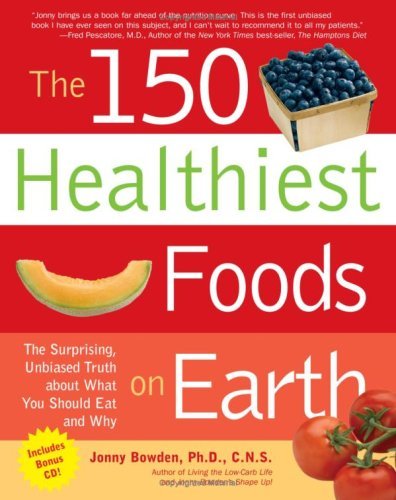
Filed under: General Health, Nutrition
It has been an insanely busy week and I have tried my damndest to get in even 2 blogs. So at 10:30 on a Friday night I am cranking out blog #2 just for you guys, so I hope you enjoy it.
I often get questions on how to spice up food, add a little more pop, variety and spice to meals that can sometimes become monotonous. So today I wanted to discuss a few condiment options that can really diversify your meal planning. There are obviously many more, but these are a few of my favorites.
1. Extra Virgin Olive Oil Basil Pesto.

I LOVE pesto. It is calorie dense, so you do have to be mindful of portion size, but it is most certainly delicious! The fat comes from the incredibly heart healthy extra virgin olive oil, and the basil provides some pretty potent health benefits as well. Basil has been shown to protect cell structures as well as chromosomes from radiation and oxidation. It has also been shown to have some very powerful anti-bacterial components. It is also anti-inflammatory, and is a good source of vitamin K, and vitamin A.
2. Hummus.
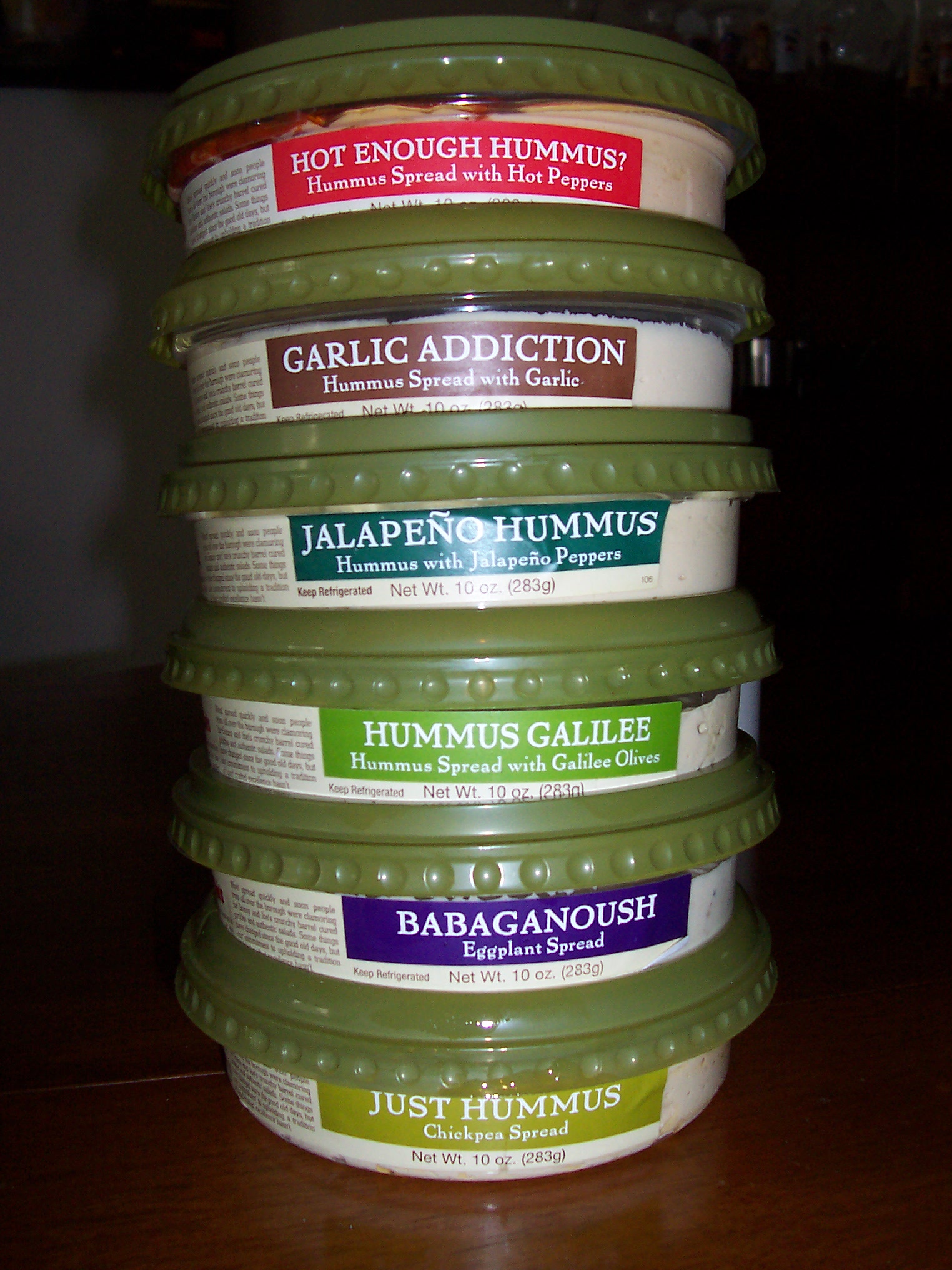
Hummus. One of my absolute favorite snacks. I don’t think a day goes by where I don’t have hummus with some baby carrots. I absolutely love it. It is low in calories, only 50 in 2 tbsp. It is made from chickpeas so it has little to no impact on blood sugar. The chickpeas are a great source of molybdenum, manganese, folate, fiber, protein and more! Molybdenum is not exactly a famous nutrient, but it is quite interesting. It helps to detoxify sulfites, which some people have reactions to and can cause rapid heartbeat, headache or disorientation.
3. Guacamole.

Gauc. Awesome in combination with pesto, absolutely awesome. Being made mainly from avocados, it is incredibly healthy. It provides a nice serving of heart healthy monounsaturated fats (like pesto) and also helps fight cancer of the mouth, breast, and prostate, and improves skin tone. Avocados also contain lutein, a powerful antioxidant that is essential to eye health. They also contain more potassium than bananas for blood pressure, is the richest source of beta-sitosterol, may increase HDL and provides more than 25 essential nutrients.
There you have it, three condiments that not only add a whole bunch of kick ass flavor to your cooking repertoire, but also had some kick ass nutrients to your health. Enjoy!
Filed under: General Health
So, this is a slightly random post today, but it is something I think can help a lot of people. In winter I suffer from pretty dry skin that used can be sometimes quite painful. I have tried lots of different bodywashes and stuff, loofahs, lotioning everyday (manly I know) to prevent it. They help, but it’s not perfect.

I was reading my dad’s Men’s Health a few months back and they had a report on water filters, shower filters and such. It piqued my interest as it mentioned a shower filter that removed 99% of chlorine, as well as reducing sulfur and other drying agents. With my history of dry skin I thought it might be worth it to give it a shot, so I bought one, and it has been awesome. It has a kickass massage setting, plenty of water pressure and helped to keep my skin much better at the end of the winter. I couldn’t be happier with it.

It is the Culligan WHS-C 125 Wall Mount Filtered Showerhead. It is relatively cheap, roughly $30 for a 6 month filter life, and about $15 for a replacement filter. When you have painful dry skin, $45 a year is a pittance to pay to help keep it healthier. They also offer a handheld version if you are so inclined. It isn’t fool proof, and it isn’t going to make your skin perfect all by itself, but it can help, and help a lot. For those of you who wage the dry skin battle, it is just one more arrow in your quiver. Good luck.
Filed under: General Health
Many people like to use PAM cooking spray or something like it on their pans whenever they cook. It doesn’t seem like such a bad idea, but those aerosol sprays do contain a lot of chemicals, and even if they are the extra virgin olive oil(evoo) kind, how fresh are they? How hot did they get in shipping? How high quality of an olive oil is it really? These are questions where the answers really do make a big impact on your health.
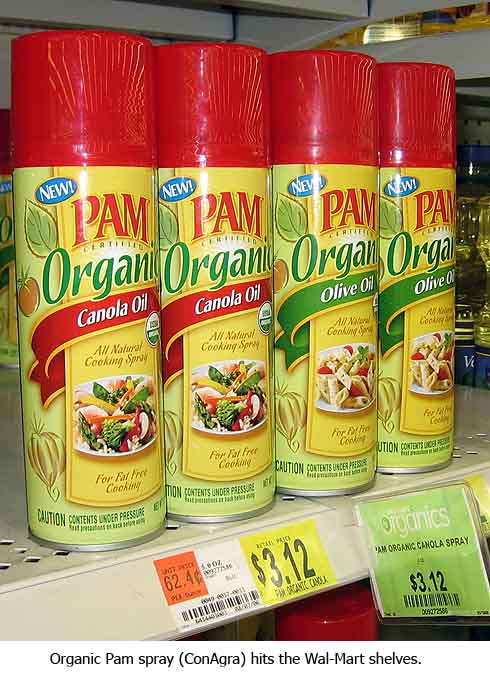
Just because it is organic does not mean it is good for you
The rule of thumb has been for people to either say screw it and use the PAM anyway, or to pour high quality evoo in their pan. The problem with olive oil is that those calories add up, and it is easy to pour more in than you want. To solve the dilemma here is a simple tip that I picked up from Dr. Mohr (I can’t remember if it was Chris or Kara, regardless check them out at Mohr Results).
Pour your evoo into a spray bottle, and voila, you have a homemade PAM. You can now lightly coat a pan with a high quality evoo of your choosing, minus the excess calories and unnecessary chemicals.
As awesome as this tip is, I am taking it to a whole new level. Recently my good friend Cassandra Forsythe blogged about the dangers of plastic, and truth be told it can be even worse with lipids, like evoo, in plastic. Harmful chemicals can leech out and into your oil, taking a healthy food and making it a nutritional disaster. Rather than pouring that evoo into a plastic, possibly dangerous spray bottle, pour into a beautiful Misto Gourmet Stainles Steel Olive Oil Spray Bottle. It uses kitchen air as the propellant. It is washable, refillable and totally awesome. Maybe even a perfect Father’s Day gift for some of you last minute shopper’s out there.
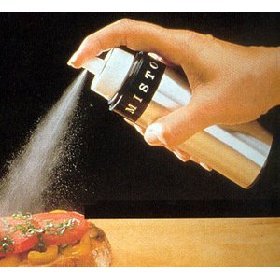
Amazingly it was actually back home in Maine where I discovered this little item. I was at my parents house and I noticed it sitting on the counter. So a big thanks goes out to my mom for showing me this awesome product as I was pretty pumped to discover this.
Filed under: General Health, Nutrition
Now as most of you know I am not a big fan of wheat. I prefer sprouted grain versions to decrease anti-nutrients and allow for much better vitamin and mineral absorption. Unfortunately, a great food seems to have been lumped into the wheat category, when in reality it stands far apart, especially since it is a seed and is related to rhubarb, not too wheat. Today I am taking about buckwheat, also sometimes known as kasha. Like quinoa, buckwheat is not a grain but a seed. Though it is treated like a grain for culinary purposes, it’s health benefits far exceed that of ordinary grains.

Buckwheat used to be widely grown in the Northeast as a popular and healthy crop in the 18th and 19th centuries. Due to the rise of nitrogen fertilizers, it was replaced by wheat and corn, which thrive in that nitrogen rich environment, and where buckwheat falters. Again showing how far our agriculture has fallen (for more info on why that is a terrible trade-off, check out The Omnivore’s Dilemma, which I blogged about here).
Also like quinoa, buckwheat is high in fiber, has a very low impact on blood sugar, and is a complete protein. Most cereal grains like wheat, rice, millet and corn are lacking in a few essential amino acids. Buckwheat is also beneficial in the fact that again unlike wheat and other cereal grasses, it contains no gluten, making it safe to consume for people with gluten sensitivities.
Buckwheat has been studied quite extensively for it’s ability to lower cholesterol. Now I still don’t believe in the lipid hypothesis of cholesterol causing heart disease, but I do believe that oxidized cholesterol is a major problem, so anything that can help lower that is awesome. The proteins in buckwheat also help to stabilize blood sugars, very important for people with diabetes or metabolic syndrome. The benefits don’t stop there either. It’s proteins also reduce the activity of angiotensin converting enzyme, reducing blood pressure and hypertension. Pretty buckwheat is just full of kickassery.
Buckwheat is also high in zinc, copper, manganese, iron and selenium. It is also high in rutin, an antioxidant that supports the circulatory system by strengthening capillary walls, reduces recurrent bleeding in people with high blood pressure and weakened blood vessels and can increase microcirculation in people with chronic venous insufficiency.
An interesting aside, buckwheat is the common source of the malt in gluten free beer. Just thought I would throw that out there. Now go enjoy some buckwheat pancakes, filled with some delicious Maine blueberries.

Filed under: General Health, Nutrition
For those of you who missed it, I began a 2 part series about Nutrition 101 HERE. Today is a continuation of my top 10 rules, guidelines, tips, what have you. Do remember that even with all these guidelines, there is no one perfect diet. Many people find many different ways of eating, that still fall under the realm of these guidelines yet are completely distinct, that are as healthy as can be. Now onto the fun stuff.
6. Eat Healthy Fat, and Lots of it.
- Fat is necessary for proper hormone production.
- The 80′s were wrong, do not fear fat.
- Fat doesn’t make you fat.
- The lipid hypothesis of heart disease is wrong.
- Eat fat from foods that meet the criteria of Rules 1 & 2.
- Do not fear saturated fat, as long as it comes from food following Rules 1 & 2.
- Minimize consumption of industrial vegetable oils – corn, soybean, safflower, sunflower, etc.
- Should usually be at least 1/3 of calorie intake.

7. Only drink single ingredient, zero calorie beverages.
- Liquid calories go unnoticed by the body, so they add up.
- Best choices – water, tea, some black coffee.
- Some fresh juice ok in moderation.
8. Minimize Supplementation, though some is OK.
- Use to enhance, not replace a balanced diet.
- Lack nutrients inherent to REAL food.
- Best choices – protein powder, vitamin D, fish oil, creatine, resveratrol, etc.

World's Best Protein Powder
9. Control Carbohydrate Intake
- Carbs should be mainly from nutrient dense fruits and veggies.
- Grains should only be from real whole grains – old fashioned oats, quinoa, sprouted grains, amaranth
- Minimize regular wheat intake – high in anti-nutrients – choose sprouted grain versions
- Best times for grain-based carbs – breakfast, pre and post training.
- Individual variance to this, so do not fear carbs, just use appropriately.
10. Live a Little!
- Break the rules once in a while.
- Do not fear eating a piece of cake, or some french fries, just do not make a habit of it.
- Understand what once in a while is, it is not a daily occurrence.
- Don’t always be “that guy (or girl)” who never eats anything at parties or social gatherings, it is ok to not be perfect.
I hope that helps some people, whether you are just trying to maximize health, lose weight, gain mass or some combination thereof, put these tips to use and you will certainly see vast improvements in all cases. Again, questions and comments are most welcome.
Addendum to Rule 2.
- Avoid artificial sweeteners, instead chose natural versions – Stevia, Lo Han, Molasses, Honey, Agave Nectar, etc – still only use sparingly.
Filed under: General Health, Nutrition
I have had a few requests from readers to gather my thoughts and form a sort of nutrition 101 set of rules and guidelines to eat by. I will give my top 5 tips today and finish it next week. I do want to preface this list with the fact that my rules are constantly evolving, they are different now than they were just a year ago, and they will probably be different next year. I am always reading, learning and evolving my thoughts. So here goes.
1. Eat REAL whole, unprocessed food.
- If you couldn’t hunt, fish, pluck, grow, or ferment/culture the food, you probably shouldn’t eat it.
- If it wasn’t food 100 years ago, it probably isn’t food today.
- If it comes in a box or a plastic wrapper, it probably isn’t food, it is a food product. These are not the same thing, so learn to recognize that.
- If it contains lots of industrial vegetable oil (soybean, safflower, sunflower, etc) and/or sugar/high fructose corn syrup, don’t eat it.

2. Eat food as close to it’s natural state as possible.
Examples:
- meat, eggs and dairy from pastured/grass-fed animals
- eat full fat versions of these foods for the greatest profile and absorption of nutrients
- produce from local, seasonal, and sustainably grown sources

This is for Danny
3. Eat every 3-4 hours.
- This is not to “boost” your metabolism or any of that hocus pocus.
- It is mainly to prevent overeating at meals, and consumption of foods that don’t follow rules 1 and 2.
4. Eat protein with every meal or snack.
- Again, this isn’t to “boost” your metabolism, but regardless of goal, a higher protein diet has been shown to be more effective.
- Builds more muscle and repairs damaged tissue when trying to gain mass.
- Maintains muscle tissue when trying to lose mass.
- Produces a higher Thermic Effect of Feeding, meaning it require more calories to digest protein than other foods.
5. Eat at least 1 full serving of vegetables and/or fruits every time you eat.
- Just a simple way to reach that daily quota of 10+ servings of vegetables and fruits.
- Increases amounts of powerful phytonutrients, antioxidants, vitamins and minerals to optimize health.

That wraps up today’s installment. Now some people might disagree and put rule 5 as rule 1, or vice versa, and in reality, it really doesn’t matter. As long as there are the tenets that you eat by most of the time, because you are allowed to eat brownies and white bread once in a while (you know that right?) then the order of the rules really doesn’t matter, it is simply semantics. Questions and comments welcome.
Filed under: Movie Review
I know my first blog posts of the week are usually about a particular food and it’s unique health benefits, but…I watched an incredible movie this weekend that I just wanted to share. I haven’t done a movie review in a while so bear with me, this might get long.

I am not gonna lie, I was absolutely blown away. I had heard really good things, and I had wanted to see this for quite some time, but Ben Affleck absolutely shocked me. He has really been coming around the past few years, not that anyone is willing to admit it. Still, this was a HUGE step up for him. I felt like the first hour of the film was good but not great, but the second half is taken to a whole new level, as Affleck really tightens the screws, always leaving you wondering what is really going on. I hope that this isn’t a one-hit wonder for him, if he is actually this good of a director he could become the next Clint Eastwood. That might be a bit much, but seriously, a decent actor (usually) turned brilliant director. That is Clint, and might that be in Ben’s future as well?
Alright, enough about the direction, the acting in this was sublime. Casey Affleck was simply superb, it just seemed effortless. Combine this with his wonderful work in The Assassination of Jesse James by the Coward Robert Ford (for which he was Oscar nominated) and 2007 was a hell of a year for Ben’s little brother. As good as Casey was, the rest of the cast kept pace. Amy Ryan was absolutely mesmerizing as a Southie mom. She nailed the entire role, not just the accent, but the expressions and the nuances. Hence why she was nominated for an Oscar for the role. Morgan Freeman was his usual self, he is just in complete command of his craft. Ed Harris was intense, sly and just perfect for the role. I’m telling you, the ensemble cast was incredible and the acting reflected it.
Much like Mystic River (both based on books by the same author) this movie stays with you long after the credits roll. It is haunting, and it makes you wonder about what choices you would have made had you been in the same situations. The way the story unfolds is fantastic, never revealing its secrets to early, never giving itself away (I hate when directors and screen writers feel the need to spoon-feed me information) and I give full credit to Ben Affleck. Along with directing the film, he co-wrote the script, and again his work was superlative. Even with the dark and gritty plot and backdrop of Dorchester, MA, you don’t walk away feeling depressed, just reflective, and that was Ben’s ultimate achievement.

I went into this movie with high expectations and not only were they met, they were exceeded. I actually didn’t know a ton about the story going in, and I would highly suggest not researching the plot too much, as the story is the driving force behind this tale. Overall I would give this a 92/100. Getting in the A range from me is a very rare feat, so that speaks volumes to how much I truly enjoyed this film. Rent it today.
Filed under: Uncategorized
I have blogged a few times about the importance of a healthy gastrointestinal tract. Poor digestion, consistently upset stomach, diarrhea, constipation, gas, bloating, etc are all signs of a dysfunctional GI tract. This is bad news bears folks. The food you eat can only be broken down and absorbed into it’s healthy(or unhealthy) constituents if the GI tract is working properly. Here are some really interesting pointers about your GI tract that I stole from a really good post on GI health at the precision nutrition blog.
- The gastrointestinal system comprises 75% of the body’s immune system.
- There are more neurons in the small intestine than in the entire spinal cord.
- It is the only system in the body that has its own, independently operating nervous system, called the enteric nervous system.
- If you stretched out the gastrointestinal system in its entirety, it would have the surface area of a regulation sized singles tennis court.
- There are over 400 species of microbes living in your gut, totaling over 15 pounds of mass and containing more bacteria than there are known stars in the sky.

GI Tract
That is pretty intense. Just more evidence to show why eating stuff like sucralose, which could potentially destroy half the bacteria in your gut or more may not be a good idea. Why eating yogurt to restore or keep up the level of healthy bacteria is such a good idea. To quote myself,
“Intestinal flora is of utmost importance to health, as we know it contributes to digestion and absorption of nutrients, prevention of harmful pathogens like E. coli and salmonella taking root, and keeping the immune system in optimal condition”
This is something that we as consumers really need to start being more aware of. If you want to stay truly healthy you can’t just focus on eating from a list of “healthy” foods. What if some of those foods do not agree with you? What about food allergies, or even just low-level intolerances? Think about the people you know who have Celiac’s disease (gluten intolerance), when they eat wheat or other gluten-containing foods, they suffer serious repercussions. That is an extreme example, but pertinent none the less.
I also think it is really fascinating that more than 75% of the body’s immune system is in the GI tract. It makes sense if you think about it. As mentioned above the surface area of the GI tract is massive (covering an entire tennis court, maybe more), leaving plenty of opportunity for pathogens to find a way in. This is another reason why the stomach is so acidic, it destroys many microorganisms simply because they can not survive at that pH. There are also enzymes in the GI tract that help to detoxify antigens and xenobiotics (like prescription drugs!), assisting the immune system. So when you really think about it it makes a lot of sense for so much of our body’s defenses to be located in the gut, preventative action at its best! So take care of it, and try to allow in the least amount of problematic foods possible.
The most fascinating point to me was that the small intestine has more neurons than the entire spinal cord. Why? Doesn’t that seem crazy, our spinal cord is what relays messages from our brain to our bodies, yet the small intestine has more neurons? Bizarre. It is an area that interests me greatly and I believe we need a lot more research into the importance of the small intestine to the overall health of the body.

Small Intestine
Wrapping up, take care of your GI health. Eat yogurt if you can, take digestive enzyme, probiotics and hydrochloric acid if you need to, eliminate foods that upset your stomach, and be well.
Filed under: General Health, Weight Loss
This past weekend my fiance and I moved apartments. (Hence the lack of blogging since the beginning of last week!) It was absolute hell. We did the move almost entirely on our own, and our bodies took a toll. Loading our rented moving truck, an absolute monster (it was supposed to be a 16 footer, instead they gave us a 26 footer!) was hard enough, but moving all our crap up three flights of stairs was even more fun. To top it all off, our couch had a slightly raised staple that cut us both up pretty good, making it look like we got into a vicious knife fight.

Me behind the wheel of this rig
We ate like absolute crap this weekend, since we were almost completely out of edible food and whatever was left was half packed away, half buried behind boxes. I ate food that I haven’t eaten in years and years. The worst part was we didn’t take many food breaks, so when we did it, we absolutely crushed food, crushed it! Even with the unholy amount of crappy calories I stuffed down my piehole, I managed to lose a few lb’s over the weekend! This goes to show the absolute amazing effectiveness of NEPA. NEPA (non-exercise physical activity) is a pretty broad term, and I’m not sure that moving heavy crap up and down stairs doesn’t fall under the category of exercise, but bear with me for the sake of argument.
When it comes to fat loss, every little bit counts. Leigh Peele, known for her ability to elicit fat loss from clients who have been stalled for years, is a huge fan of NEPA. In her book, The Fat Loss Troubleshoot, and in pretty much every interview she does Leigh hammers home the point of being more active, of just moving more. It sounds cliche to park your car further away, take the stairs instead of the elevator (right Cass?), but things like that really do add up. Fidgeting burns tons of calories. Just getting up every hour at work to take a 5-10 minute walk, or do pushups or bodyweight squats in the bathroom adds up as well. At the end of the day, you could be talking about several hundred extra calories burned without inhibiting recovery capacity from your actual exercise sessions (and possibly enhancing recovery with increased bloodflow), that really adds up over time.

Long story short, be more active! Take small walks before dinner. Take the stairs at work. Every hour get up from your chair and move around, do some bodyweight movements or stretch. Just move more! It really does help, you don’t have to move everything you own to lose a few pounds, but just moving your body a little more every day will help the process along nicely.























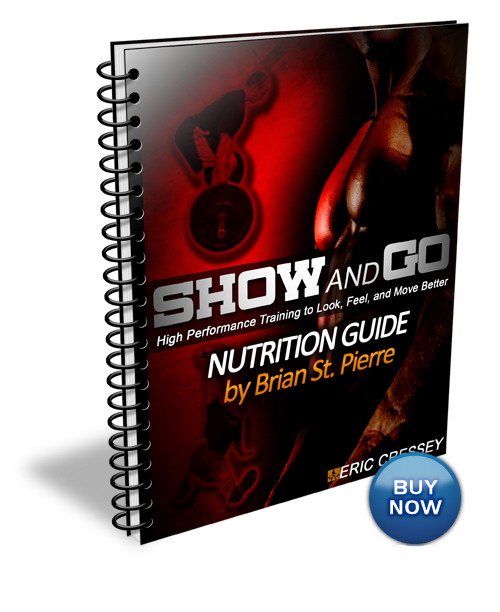
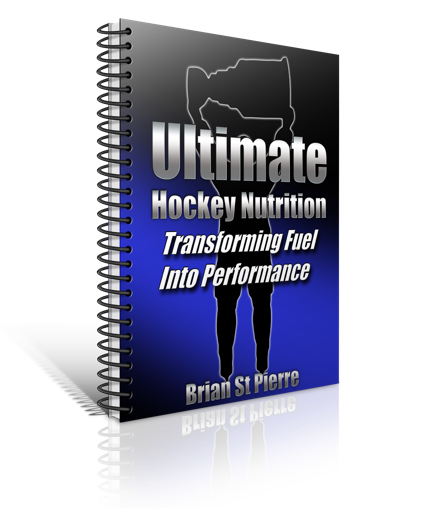
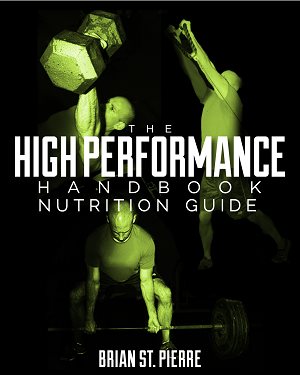

Posted on June 29th, 2009 by Brian St. Pierre
24 Comments »